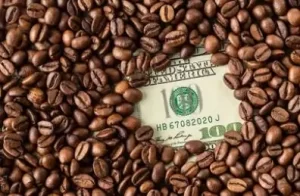Intellectual Property Rights (IPR) are like different keys for different locks. Just like every lock…
By Whatever Beans Necessary
Introduction
Standardised by millennials and popularised by Gen Z, the coffee consumption culture has undoubtedly become a vital part of our everyday lives. You might think your daily Cup of Joe only includes the ingredients you prefer but in reality, each and every cup consumed is also filled to the brim with Intellectual Property; the GI tag of the coffee bean’s source country, the trademark of the coffee corporation or shop you choose to purchase your coffee from, the patent for the machine used to brew your coffee, the cup poured in or even perhaps the cardboard sleeve you use to hold your coffee cup, that is, if you buy it from Starbucks . Up until a few years ago, the Starbucks sleeve was also copyrighted and that’s beside their trademarked logo being printed on each sleeve served. This is the quintessence of rampant Intellectual Property protection by corporations, and it might just be the main reason that most of the Intellectual Property cases related to coffee are dominated by large corporations, especially internationally.
The Economics of Coffee
While coffee is essentialised for being an energy booster and mood lifter in one segment of the world, it is the basic means of survival for the producing countries. From a geographical perspective, the demand for coffee has been concentrated in developed countries of the northern hemisphere with high income per capita in comparison to the regions producing coffee themselves such as Asia, Africa, Central and South America, the Caribbean, etc.
[Image Sources : Shutterstock]

Geographic Indication vs Trademarks
Geographic Indication (GI) is probably the most sought-after Intellectual Property for producing countries for denomination of origin as it is suggestive of the reputation and quality of the product. However, the unconventional move to Trademark the coffee names by the Ethiopian government was backed by three claims; firstly, according to Ethiopia, the coffees did not represent specific geographical locations like a Geographical Indication is ought to. For Ethiopia to obtain a GI tag, the coffees would have to be produced in the same region under the same characteristics, which was not the case. The ‘link’ between product characteristic and the region they were being produced in was missing. Secondly, the Ethiopian government intended to increase their exporters control and bargaining power in the market, and thirdly, due to a large number of smallholder producers, the registration of GI was exceptionally difficult.
An Unprecedented Precedent
Soon after the EIPO’s trademark application for Yirgacheffe was approved by the United States Patent and Trademark Office (USPTO), National Coffee Association (NCA) opposed its registration, allegedly because of Starbucks. While the grounds for opposition were that the marks were generic and descriptive, the actual reason might have been Starbuck’s pending registration for ‘Shirkina Sun-Dried Sidamo’. The clash between Starbuck’s and the EIPO’s conflicting marks resulted in Starbucks receiving massive backlash which led them to publicly state the effectiveness of GI over trademarks in a press release and, aid the EIPO in obtaining GI tags for their specialty coffees.
The Ethiopian coffees were eventually registered as trademarks in multiple countries , along with their individual logos. Starbucks and the EIPO also found middle ground through trademark licensing. It is imperative to note that the licencing agreement was royalty-free but included the promotion of the specialty coffees.
Conclusion and Possible Implications for India
Presently, India has five (5) coffee varieties which have obtained a Geographical Indication tag which is cultivated mostly in the Southern States. However, the adversity of the Indian farmers cultivating these varieties is not unfamiliar. A plausible solution to escape this cycle of plight can be for India to register these five varieties as trademarks as well. Licensing of these Indian coffees can help small scattered Indian farmers earn sufficient income while also boosting the promotion of India varieties in the domestic and the international market without resorting to intercropping. Following the Ethiopian model, the exporters, who have borne the brunt of market surplus and stiff competition, can also increase their control internationally.
The EIPO’s initiative has undeniably set a precedent for change. Even though the result of registration was not the most favourable in context of better financial returns for the farmers, the commercial prospect has definitely improved for other producing countries like India who wish to leverage benefits for their own farmers and has addressed the apparent power imbalance and monetary disparity in global commodity trade. Producing countries can now brand, market and export their products as both a Geographical Indication and a Trademark, which will enable them to license their products and charge an appropriate price as a trademark registration would help them strength
Author: Saiesha Dhawan, in case of any queries please contact/write back to us via email to chhavi@khuranaandkhurana.com or at IIPRD.



